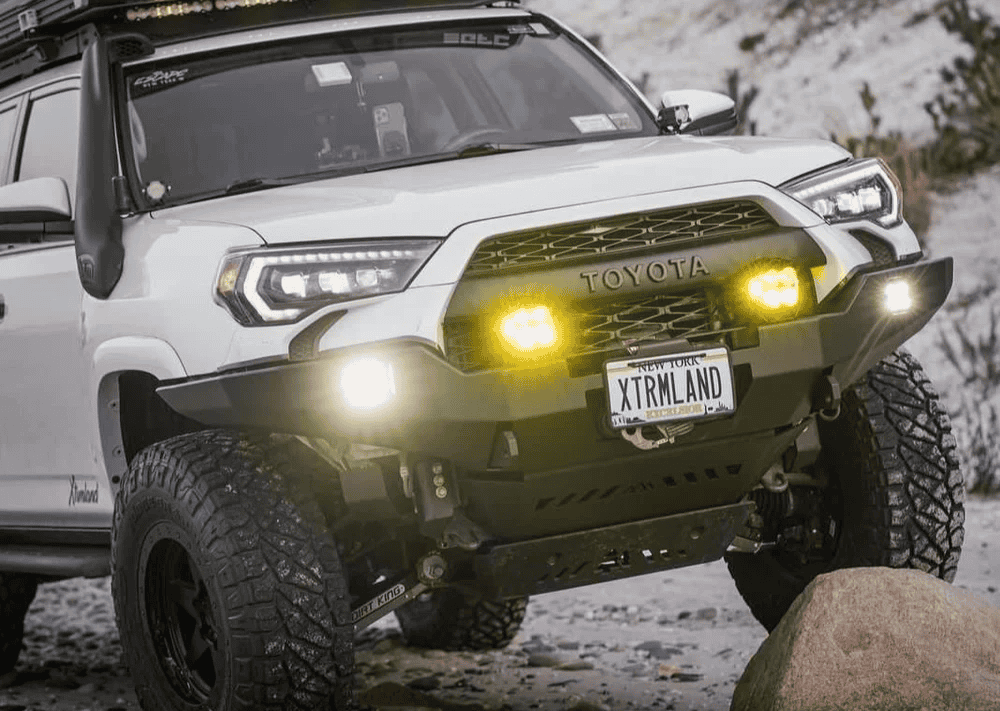Overland Vehicles

Fishing drives route choice, and water dictates the rig. Alpine lakes demand long climbs and changing weather. Braided rivers and tidal flats add mud, sand, and long stretches without services. Backcountry reservoirs often hide behind washboard roads that shake gear apart if it is not secured.
Access is more than a map line. Check land status, gates, seasonal closures, and high water re routes. Scout satellite imagery for turnouts and safe camp spots near legal access points. When in doubt, call local land managers or fly shops for current conditions and etiquette.
Any reliable vehicle can reach stocked ponds, but remote water rewards clearance, payload, and range. A midsize truck fits tight forest roads and carries a canopy system well. A full size platform hauls kayaks and coolers with room to spare. Short wheelbase helps on rutted climbs. Prioritize true low range four wheel drive if snow, slick clay, or steep launches are on the menu.
All terrain tires with strong sidewalls matter more than raw horsepower. Airing down smooths washboard and helps in sand, but only if you carry an air source. Quality shocks tame corrugations and keep gear from bouncing into trouble. Carry a full size spare, plug kit, and tools. Plan fuel and battery range for slow travel, long idles, and power hungry accessories.
Kayaks and inflatables open water that shore anglers cannot touch. Secure hulls with bow and stern lines, then strap paddles and PFDs where they cannot fly loose. Use crossbars and racks rated for dynamic loads. Keep rod tubes inside the vehicle when possible to deter theft and sun damage.
A fishing focused overland rig keeps rods safe, tackle sorted, and wet gear contained. Think in zones. Clean, dry storage for rods and clothing. A wet bay for waders, boots, and fish handling. A food zone separate from bait. A work surface for knots, hooks, and filleting away from sleeping areas.
Essentials to dial in:
A solid electrical system keeps you on the water longer. Size a lithium battery for your fridge, lights, and charging. A DC to DC charger tops the house battery while you drive without risking the starter battery. Solar helps hold charge at camp on multi day trips. Fuse every circuit and protect wiring from abrasion and moisture.
Respect the fish and the places they live. Follow local regulations on seasons, limits, barbs, and bait. Decontaminate boats and waders to stop invasive species moving from one watershed to another. Keep fish cold immediately if you harvest, and pack them so they will not leak in the cabin.
Weather and water move faster than trip plans. Watch flow reports, tides, and wind windows. Carry layers that dry fast and keep a spare set sealed for emergencies. Store bear safe in the backcountry. Make camp well away from stream banks to avoid rising water at night.
Remote fisheries often mean long gaps without ice, fuel, or cell service. Add a range buffer of at least 25 percent. Carry a small parts kit for racks and drawer slides. Pack enough food and water to stay safe if a road closes or a storm stalls the trip.
If you want the right balance of capability, comfort, and protection for your tackle and catch, a fishing focused upfit makes the difference. Explore examples of Overland rigs purpose built for remote access and long stays off grid. For a tailored solution, see our Custom overland upfit approach that integrates secure rod storage, wet gear zones, and dependable power. Curious about the shop behind the work, our process, and reviews from real travelers Start with Why choose OZK Customs.
Dial in your rig for the waters you love. Tell us your target species, the roads you plan to travel, and how you camp. We will map storage, power, and protection into a setup that feels effortless on the road and at the water.
Ready to turn your fishing plan into a dialed‑in overland rig built for remote water, secure storage, and reliable off grid power? OZK Customs designs and builds complete and partial upfits that protect rods, tame wet gear, and keep your cold chain rock solid. Tell us how and where you fish, and we will engineer the rig that gets you there and back with confidence.
ADDRESS:
6159 E Huntsville Rd, Fayetteville, AR 72701
PHONE:
(479) 326-9200
EMAIL:
info@ozkvans.com